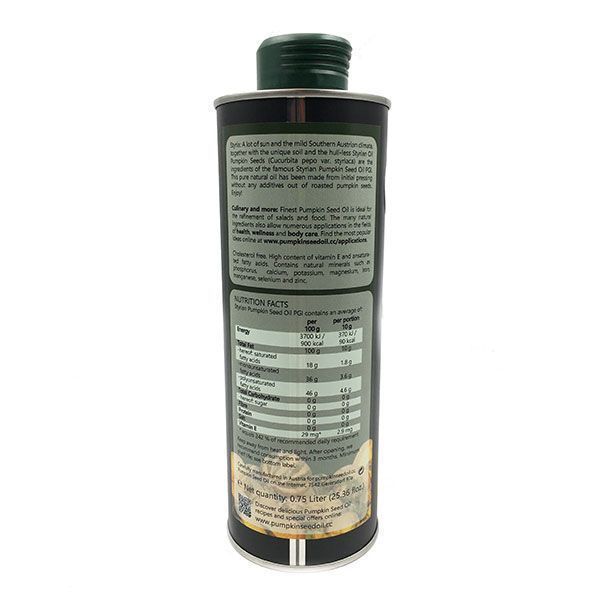

Pumpkin oil is one of the substances with the strongest dichromatism. The oil appears green in thin layers and red in thick layers, an optical phenomenon called dichromatism. The viscous oil is light to very dark green to dark red in colour depending on the thickness of the observed sample. Seed types and oil Ī drop on a white plate showing dichromatism High-temperature roasting improves the aromatic quality of pumpkin seed oil. Styrian oil – an export commodity of Austria and Slovenia – is made by pressing roasted, hull-less pumpkin seeds from a local variety of pumpkin, the "Styrian oil pumpkin" ( Cucurbita pepo subsp. Once the oil is obtained, further specific extractions may be done, such as for carotenoids. Oil from pumpkin seeds is extracted by solvent extraction or by supercritical carbon dioxide methods. Using it as a cooking oil, however, destroys its essential fatty acids. It is considered a delicacy in Austria and Slovenia, and a few drops are added to pumpkin soup and other local dishes.

The oil is also used for desserts, giving ordinary vanilla ice cream a nutty taste. The typical Styrian dressing consists of pumpkin seed oil and cider vinegar. Pumpkin seed oil serves as a salad dressing. Pumpkin seed oil has an intense nutty taste and is rich in polyunsaturated fatty acids. It is also used worldwide, including North America, Mexico, India and China. Međimurje), Vojvodina, and adjacent regions of Hungary. This oil is a culinary specialty from what used to be part of the Austro-Hungarian Empire and is now southeastern Austria ( Styria), eastern Slovenia ( Styria and Prekmurje), Central Transylvania, Orăștie-Cugir region of Romania, north western Croatia (esp. Pumpkin seed oil is a culinary oil, used especially in central Europe. Intervention of pumpkin seed oil on metabolic disease revealed by metabonomics and transcript profile. Zhao XJ, Chen YL, Fu B, Zhang W, Liu Z, Zhuo H. Association between omega-3 fatty acid supplementation and risk of major cardiovascular disease events: a systematic review and meta-analysis. Pumpkin Seed Oil Extracted From Cucurbita maxima Improves Urinary Disorder in Human Overactive Bladder. J Tradit Complement Med. Nishimura M, Ohkawara T, Sato H, Takeda H, Nishihira J. Replacement of Dietary Saturated Fat by PUFA-Rich Pumpkin Seed Oil Attenuates Non-Alcoholic Fatty Liver Disease and Atherosclerosis Development, with Additional Health Effects of Virgin over Refined Oil. PLOS One September 25, 2015. Improvement in HDL cholesterol in postmenopausal women supplemented with pumpkin seed oil: pilot study. Gossell-williams M, Hyde C, Hunter T, et al. Antihypertensive and cardioprotective effects of pumpkin seed oil. J Med Food. Effect of pumpkin seed oil on hair growth in men with androgenetic alopecia: a randomized, double-blind, placebo-controlled trial. Evid Based Complement Alternat Med. Pumpkin seed oil: an alternative medicine. Rizos EC, Ntzani EE, Bika E, Kostapanos MS, Elisaf MS. Antihypertensive and cardioprotective effects of pumpkin seed oil. Pumpkin Seed Oil Extracted From Cucurbita maxima Improves Urinary Disorder in Human Overactive Bladder. Complementary Therapies in Clinical Practice. The effects of pumpkin seed oil supplementation on arterial hemodynamics, stiffness and cardiac autonomic function in postmenopausal women.

Effect of pumpkin seed oil on hair growth in men with androgenetic alopecia: a randomized, double-blind, placebo-controlled trial. Phytosterols, cholesterol control, and cardiovascular disease. Phytosterol composition of nuts and seeds commonly consumed in the United States. Phillips KM, Ruggio DM, Ashraf-Khorassani M. Position of the academy of nutrition and dietetics: dietary fatty acids for healthy adults.


 0 kommentar(er)
0 kommentar(er)
